That short siding is the remaining one of two (one was on the other track) was/is used to cut out helpers. With the greater use of DPU’s, hardly any manned helpers are now used, so ---- “anything that fits --or needs putting away”. Same for the other track mentioned at the top of the Loop. You’ll find tracks like these at the top of all helper grades.
As to laying the prefab sections of rail and crossties on the ground. I’ll pay closer attention next time a crew gang sets it up, but I think the equipment that grabs the rails, paddles the ballast and aligns itself to the forward sensor can do all that without damaging the track. I’m sure Mudchicken or some specialist workers can address this more clearly …
Warren
Easier to get the sub ballast in. With single track, grade the dirt smooth, lay the track, run ballast trains as necessary for the correct amount of ballast, use a Tamper-Liner between ballast deliveries, until the track is properly ballasted, surfaced and lined. Run Trains!
…If they can “lay the dirt smooth”…why then can’t the ballast be done the same way, and then the “track” put down on the ballast already smoothed for a good surface.
I suspect the root of the reason might be the machines or connected machines that lay track can do all the above in one complicated move and have something to actually be running on {rails}, while doing it.
It just makes me wonder how an adequate amount {and depth}, ballast is really inserted UNDER the track structure…
…If they can “lay the dirt smooth”…why then can’t the ballast be done the same way, and then the “track” put down on the ballast already smoothed for a good surface.
I suspect the root of the reason might be the machines or connected machines that lay track can do all the above in one complicated move and have something to actually be running on {rails}, while doing it.
It just makes me wonder how an adequate amount {and depth}, ballast is really inserted UNDER the track structure…
Quentin:
That’s what the choreography of the MOW crews is all about. Since there are parallel tracks 15 feet away, concurrent operations can take place to ensure that the proper roadbed is in place prior to final alignment by the equipment which rides on the newly installed rails.
Warren
…Yes, Warren…that makes sense. After thinking about it a bit more, I realize since that work is so mechinized now, that machinery needs a “track” to run on to fine tune the final track structure. Hence, the track down first.
…If they can “lay the dirt smooth”…why then can’t the ballast be done the same way, and then the “track” put down on the ballast already smoothed for a good surface.
I suspect the root of the reason might be the machines or connected machines that lay track can do all the above in one complicated move and have something to actually be running on {rails}, while doing it.
It just makes me wonder how an adequate amount {and depth}, ballast is really inserted UNDER the track structure…
Quinton (and a note to Warren at the bottom)
The ballast can be laid prior to placing the track, but that can make things more difficult than the method I have described. It may not seem “correct”, but it does work quite well. As the ballast trains operate over the newly adjusted rock, it packs it down so that it is more stable than it would otherwise be. To pack the ballast prior to laying the track takes an entire crew of “Mudchickens”, graders, packers, et all, and takes more time then to use your ballast train to do the consolidating.
After the ties are placed on the “dirt”, the rails are secured to them and a “quick and dirty” alignment is done so that the ballast train won’t derail. Then the ballast train is backed onto the track and the ballast dumped. Next, the liner-tamper is run down the track.
Depending on how it is constructed, this machine can do only one or more than one tie at a time, but either way, it has clamps that grab the top of the rail head, then hydrolic jacks lift the machine, track, and ties, the tamper fingers then push the ballast under the tie(s), the jacks lower everything and the clamps are released. This is how a “Spot Tamper” works. A “Production Tamper-Liner” has the tools set up so tha
…Eric: Thank you for the fine job of describing the operation of equipment working with the new ballast, track and alignment, etc…
Those are described as “short set-out tracks for bad order cars” according to a map in Chard Walker’s article on the 1972 upgrades of ATSF’s Cajon Pass trackage.
The article appeared on page 8 of the October 1972 edition of Trains magazine.
But obviously they can serve very well for parking MOW equipment and helpers, too.
When was the last time the San Andreas fault rumbled in that area. Seems like they are due for a major track reallignment.
When was the last time the San Andreas fault rumbled in that area. Seems like they are due for a major track reallignment.
There is seismic activity through Cajon Pass all the time - of varying magnitudes.
Kinda like wildfires and mudslides, when it happens (the big one), the rails will be one set of reconstruction activity out of a very large infrastructure package. There is a 36" high pressure gas pipeline, Interstate 15, high voltage transmission lines …
You get the picture [:O]
Warren
I was out there in the late 80’s right after the SP coal train took out a portion of San Berdoo. I drove right down the street where the pipeline ruptured a week later and carbonized the neighborhood. Too late for one disaster and too early for the other. perfect timing!
Here are two shots by Dave Toussaint from over at SoCalRailFan.com
This is up at Summit showing the joining of the CWR to ties. You can see the front of the worktrain being supported by the dozer. Ballast and alignment will be next.

And this is BNSF MOW working down at the UP connector installing signal bridges and switches.
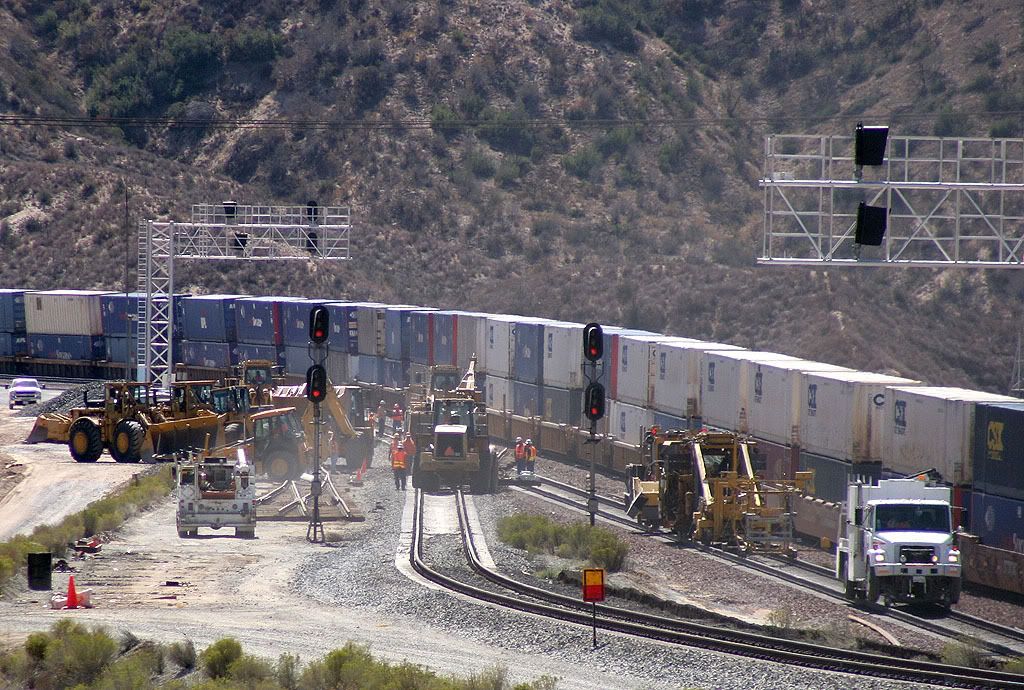
Fun work with ongoing traffic …
Warren
…Good “action” photos…
A little blurb in the Nov. Trains Magazine about Cajon Pass mentions that both BNSF and UP own routes accross the pass, but many UP trains use trackage rights over BNSF. Why is that?
The trackage rights are for operations on the original Cajon Pass line completed by ATSF predecessors in the 19th century and extend from Dagget to Riverside Jct.
In the late 20th century SP built another track from S. Bernardino up the pass to an elevation where they turned west toward their line south of Mojave and this is what UP operates w/o trackage rights.
That Southern Pacific line over Cajon was completed in 1967. This “new” SP line was designed to allow freight traffic from Bakersfield to BYPASS the congested Los Angeles Basin. At West Colton this rail traffic could join the Sunset Route and continue east to Texas and beyond. This “SP Palmdale Cutoff” runs north from West Colton thru Cajon Pass to the Cajon Summit area. Just north of Summit the SP line turns west and heads directly to Palmdale. At Palmdale the new SP line JOINS the traditional SP mainline heading toward Mojave–Tehachapi–Bakersfield etc.
Visit this EXCELLENT Southern California website for MAPS of all major rail lines around Southern California:
http://www.socalrailfan.com/subdivisions/up_mojave_sub.html
For some reason Socalrailfan does not appear to have Maps–Timetables for the Metrolink Valley Subdivision (former SP line from Burbank to Palmdale).
You can follow the now 2 SP mainlines out of Palmdale, CA on this Google Map:
I hope this little summary of the SP Cajon Pass line helps you!
—Daniel
The trackage rights are for operations on the original Cajon Pass line completed by ATSF predecessors in the 19th century and extend from Dagget to Riverside Jct.
In the late 20th century SP built another track from S. Bernardino up the pass to an elevation where they turned west toward their line south of Mojave and this is what UP operates w/o trackage rights.
Warren:
Please explain the bottom photo of your last post above. Is the train on the present (old) Track #2 at Silverwood? You captured a radical, unorthodox view of Cajon railroading. Great shot!
K.P.
Warren:
Please explain the bottom photo of your last post above. Is the train on the present (old) Track #2 at Silverwood? You captured a radical, unorthodox view of Cajon railroading. Great shot!
K.P.
K.P.
As I mentioned, the shot was taken by Dave Toussaint. It is a great image taken from above the U.P. tracks looking easterly down the connector. The stack train is heading down current mainline #2, as mainline #1 is shut down for the switch work …
I will post some of my own update photos shortly. Just got back in, and the Santa Ana winds are kicking in pretty good. A few overturned big rigs - Interstate 15 is now closed through Cajon Pass (but the trains are running just fine) [:D] …
Warren
Abutments and pier caps are in place at bridge 61.5X
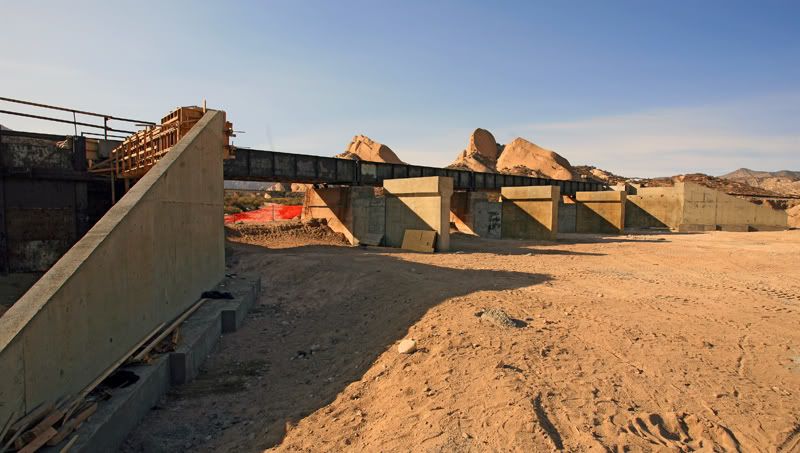
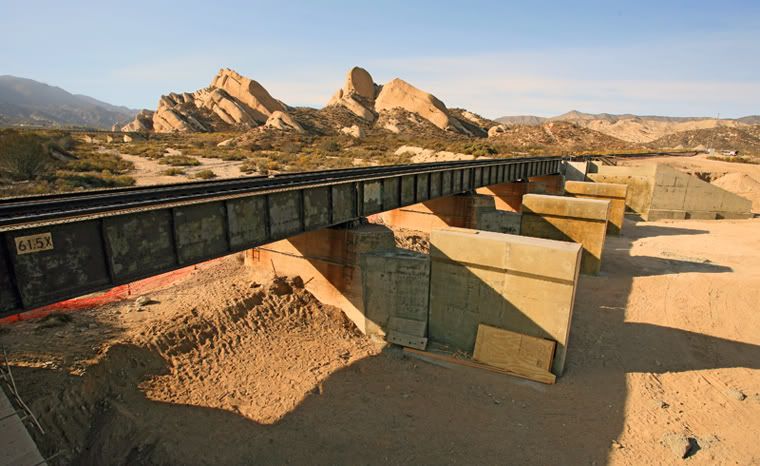
The rails and ties are installed on the subballast at Summit
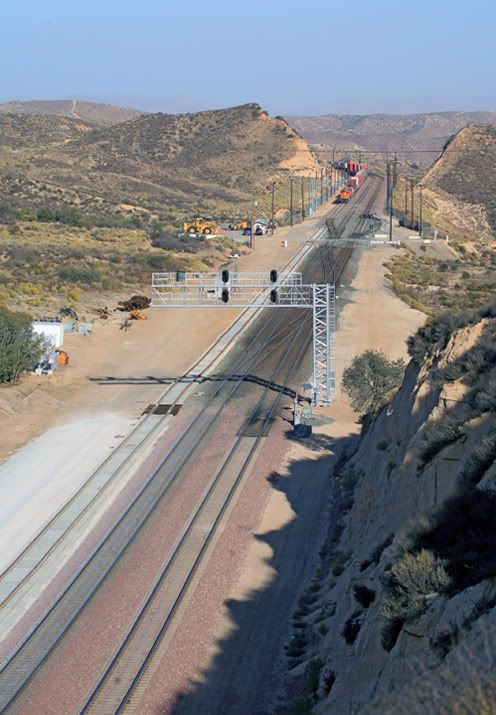
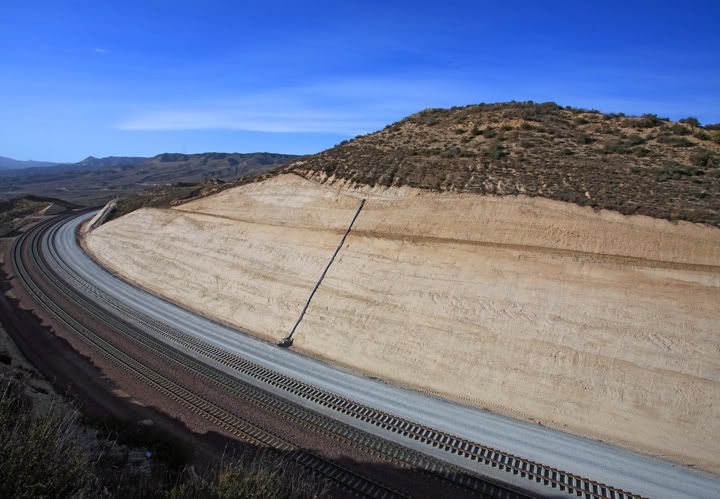
The grading and slope protection makes progress at the tunnels


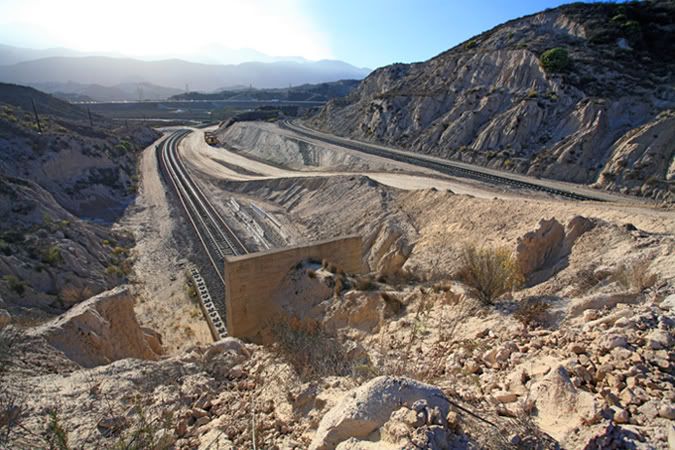
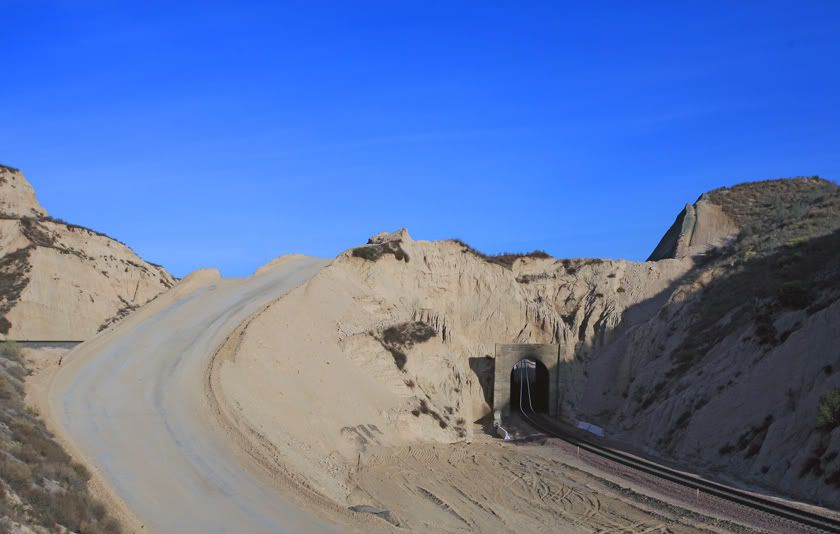
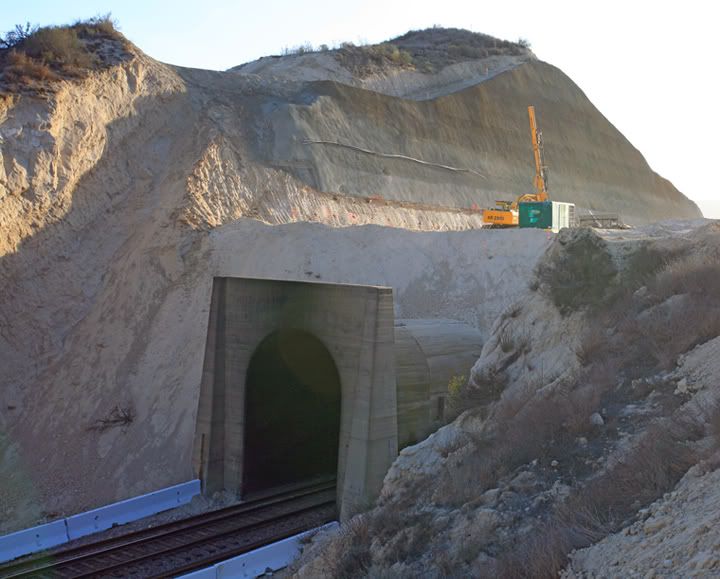
More rock removal down at Swarthout Canyon
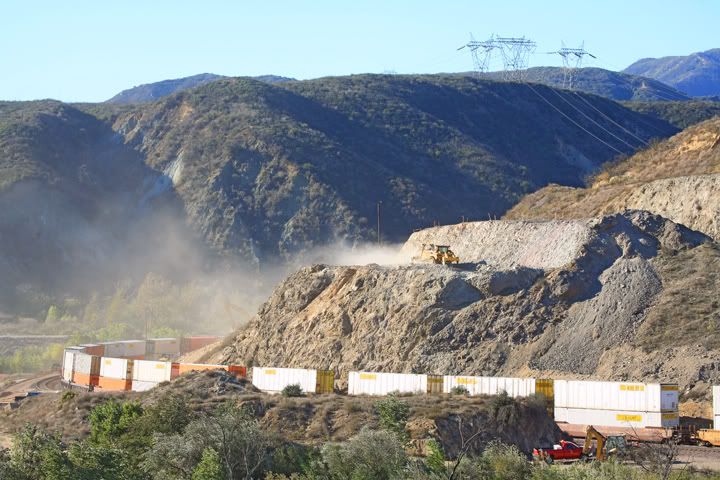
And bringing the slope down at Blue Cut

Warren
Great photos. Nice to see the progression. Reminiscent of the Santa Fe line relocation.
The tunnel work looks to be slow and potentially dangerous. Be pretty bad if they accidentally collapse it [banghead]
Is the plan to day light both? Then double track through the day lighted tunnels? Sorry if this was explained earlier.